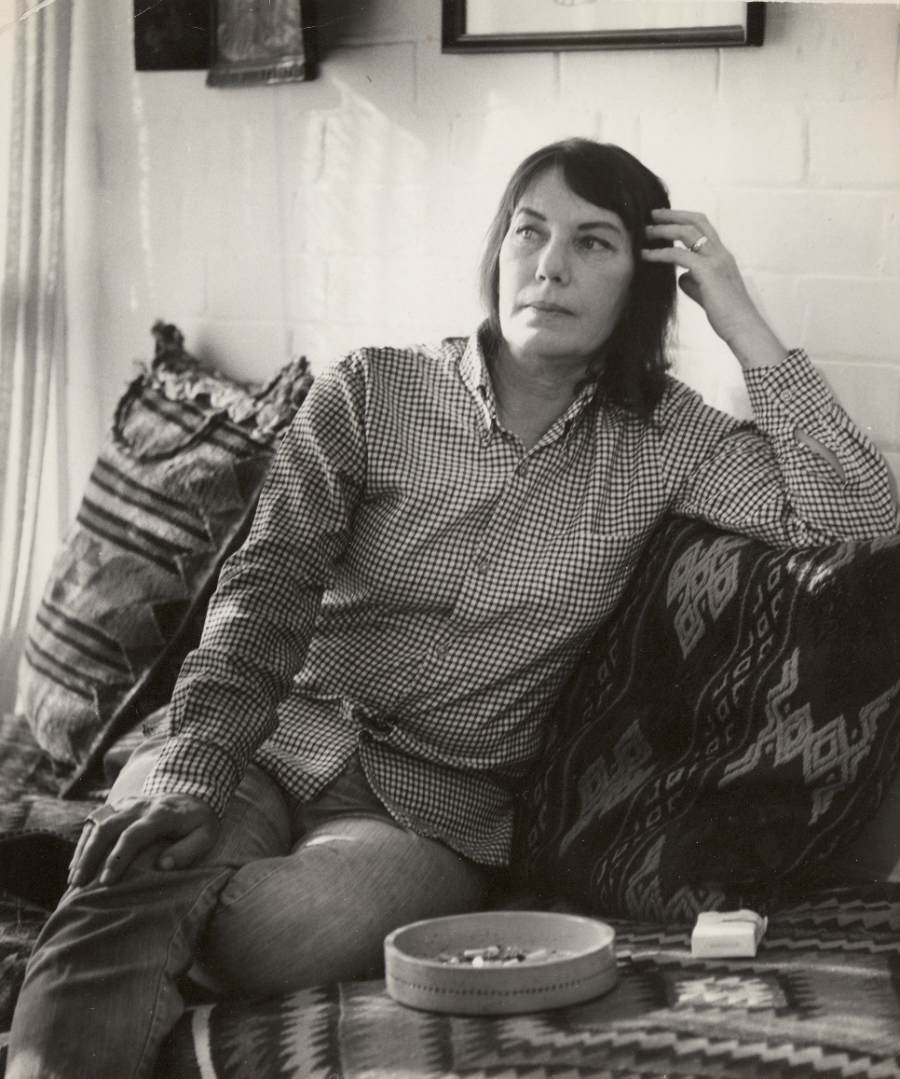About Charmian Clift
Charmian Clift, Australian writer and essayist, holds a significant place in Australia’s literary landscape. Emerging in an era when the voices of women were often marginalised, Charmian’s work boldly challenged societal norms and explored the complexities of identity, relationships, and the human experience.
Location
Category
Share and save

From the coast to the city
Charmian Clift was born in 1923 in the NSW coastal town of Kiama. She developed a passion for writing from an early age, penning a number of poems, including one when she was 8 years old about her hometown’s famous blowhole.
While Kiama was to remain a source of inspiration for Charmian’s writing throughout her life, by the time she was a teenager she wished to ‘get out into the big bad world and do something better than anyone else could do’. In 1941, at the age of 18, Charmian realised her dream by moving to Sydney funded by prize money she received for winning a ‘Beach Girl’ competition run by Pix magazine.
By the close of 1942, the 19-year-old was faced with an unexpected pregnancy. Charmian gave birth to a daughter named Suzanne Chick whom she placed for adoption due to pressure from her family.
A fresh start
In 1943, Charmian enlisted in the Australian Women's Army Service and was given her first job in journalism, editing the army magazine For Your Information. Impressed by her skills and lively personality, Brigadier Errol Knox, who served as the Army’s head of public relations and was the managing director of Melbourne’s Argus newspaper, hired Charmian following her demobilisation in 1946.
While working for the newspaper, Charmian fell in love with George Johnston, a famous war correspondent who was already married and had a child. The couple embarked on a very public love affair and when Charmian was dismissed from the Argus over the scandal, Johnston resigned in protest. What followed was a romantic and creative partnership that lasted 23 years and resulted in 3 children and 30 books, including 2 collaborative novels.
The move to Greece
In 1954, following a 4-year stint in London, Charmian Clift and George Johnston moved to Greece to write full-time, first to the island of Kalymnos and then to Hydra. Following the move, Charmian began to write and publish books in her own right. Two of her works were autobiographical: Mermaid Singing (1956), which detailed her life on Kalymnos, and Peel Me a Lotus (1959), which described the move to Hydra and the birth of the couple’s second son.
On Hydra, Charmian and George found themselves at the heart of a community of artists and writers, with visits from the likes of Leonard Cohen (who gave his first performance as a singer while staying with the couple), artist Sidney Nolan, journalist Mungo MacCallum and actor Peter Finch.
In 1960, Charmian published her first solo novel, Walk to the Paradise Gardens, which drew inspiration from the local landscape of Kiama. She then spent the next 4 years on her romantic novel, Honour's Mimic (1964), and began an autobiographical novel about her childhood in Kiama, The End of the Morning (which will be published in 2024).
Charmian’s ‘sneaky little revolutions’
Charmian, George, and their 3 children returned to Australia in 1964, where she accepted an offer to write a regular newspaper column. Between 1964 and 1969 these 'mini essays' appeared weekly in the Sydney Morning Herald and the Melbourne Herald, immediately attracting a large and devoted readership. Charmian’s ‘sneaky little revolutions’ as she once called them, reflected on Australian society and explored topical issues such as the Vietnam War, conscription, the rights of women and migrants, social justice for Aboriginal and Torres Strait Islander people, world hunger and much more.
A lasting legacy
Charmian was at the height of her popularity when she committed suicide in 1969. Her death came as a huge blow to her readers. Since then, her reputation has grown, as more people discovered her ‘sneaky little revolutions’ through compilations of her essays, comprising four publications in 1965, 1970, 1990, and 1991, and more recently in 2022. Charmian’s impact extends beyond her individual works, celebrated today as a woman ahead of her time, with her reflections on the human experience still resonating more than 60 years later.
Further reading
Nadia Wheatley, The Life and Myth of Charmian Clift, Harper Collins, 2001.
Nadia Wheatley, 'Charmian Clift (1923–1969)', Australian Dictionary of Biography, National Centre of Biography, Australian National University.
